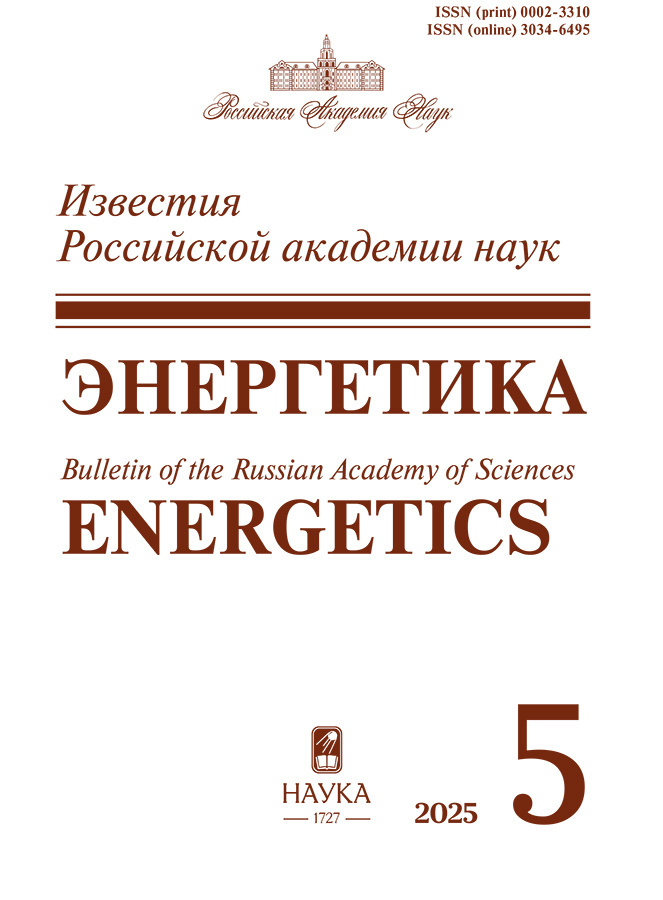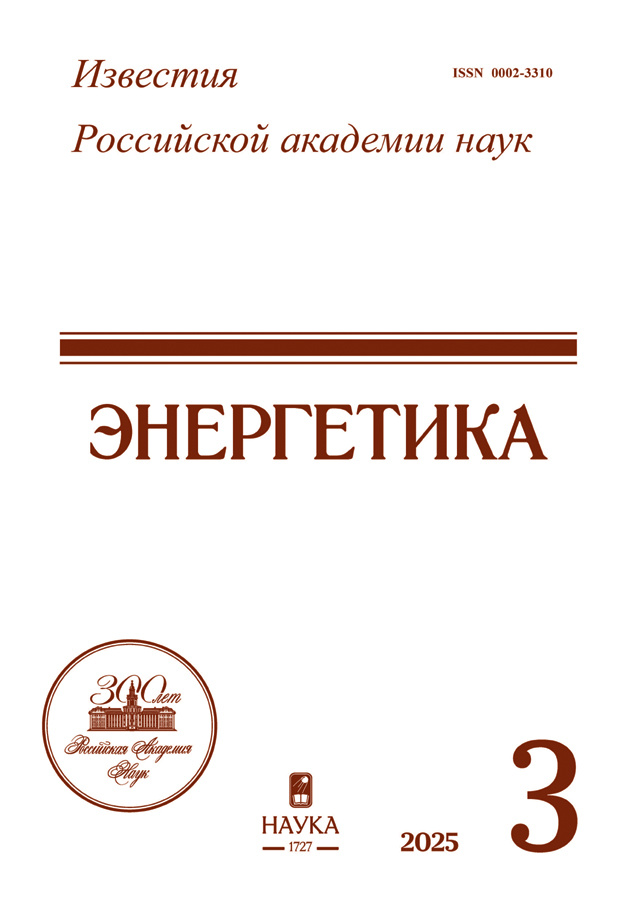Analytical Solutions of Mathematical Models of Complex Heat Transfer
- Authors: Kartashov E.M.1,2, Krylov S.S.2
-
Affiliations:
- MIREA — Russian Technological University
- Moscow Aviation Institute
- Issue: No 3 (2025)
- Pages: 3-17
- Section: Articles
- URL: https://cardiosomatics.orscience.ru/0002-3310/article/view/688021
- DOI: https://doi.org/10.31857/S0002331025030018
- EDN: https://elibrary.ru/KPPQCL
- ID: 688021
Cite item
Abstract
In mathematical models of analytical thermal physics, the problems of non-stationary heat conductivity with a boundary condition of the form (∂T / ∂n)Г = h (t) [T|Г – Tc (t)], t > 0 have a special place and relate to complex heat transfer due to the dependence of the relative heat transfer coefficient h = α / λ* on time: h = α (t) / λ* = h (t) (α – heat transfer coefficient, λ* – thermal conductivity coefficient) [1]. It is believed that α is determined only by the temperature difference. However, experiments show [2–4] that in non-stationary processes α is a nonequilibrium value and depends much more significantly on time than on temperature. Considering that its practical definition is very difficult, in all criterial heat transfer equations it is taken as a constant value α = const (h = α / λ* = const). In this case, it becomes possible to obtain accurate analytical solutions to the corresponding heat conductivity problems in the form of Fourier–Hankel integrals for partially bounded regions or in the form of Fourier–Hankel series for bounded regions of canonical type. For these purposes, special tables have been developed, which have entered thermal physics as Kartashov tables No. (1–2), allowing in a matter of minutes, using a special technique in No. 1, to write out an exact analytical solution to a heat problem [5–6] in Cartesian, cylindrical and spherical coordinate systems and then improve the solution in the form of a series using technique in No. 2 to absolute and uniform convergence up to the boundary of the domain of definition of the differential heat conductivity equation. In the case of a dependence of the coefficient h on time (h = h (t)) the situation with finding an analytical solution to the problem changes dramatically: it is not possible to obtain an exact solution. The difficulty lies in the fact that remaining within the framework of classical methods of mathematical physics [7–9] it is not possible to reconcile the solution of the heat conduction equation with the boundary condition of heat exchange at variable h (t) and to this day this problem remains open despite the attempts of a huge number of researchers on this problem of analytical thermal physics.
In this article, a method of splitting the generalized integral Fourier transform is developed, which made it possible to ultimately obtain an exact analytical solution to the heat problem for an arbitrary dependence, first in cylindrical coordinates (radial heat flow in an infinite region limited from the inside by a cylindrical cavity), and then in Cartesian coordinates (half-space limited by a flat surface). The obtained results constitute the scientific novelty of the work.
Full Text
About the authors
E. M. Kartashov
MIREA — Russian Technological University; Moscow Aviation Institute
Author for correspondence.
Email: professor.kartashov@gmail.com
Russian Federation, Moscow; Moscow
S. S. Krylov
Moscow Aviation Institute
Email: professor.kartashov@gmail.com
Russian Federation, Moscow
References
- Карташов Э.М. Аналитические методы в теории теплопроводности твердых тел. М.: Высшая школа, 2001. 540 с.
- Аттетков А.В., Волков И.К. Формирование температурных полей в области, ограниченной изнутри цилиндрической поверхностью // Вестник МГТУ им. Баумана. Серия: Машиностроение. 1999. № 1; 50–55.
- Волков И.К., Канатников А.Н. Интегральное преобразование и операционное исчисление. М.: Изд-во МГТУ им. Баумана, 1996. 228 с.
- Лыков А.В. Теория теплопроводности. М.: Высшая школа, 1967. 600 с.
- Карташов Э.М. Метод интегральных преобразований в аналитической теории теплопроводности твердых тел // Известия РАН. Энергетика. 1993. № 2. С. 99–127.
- Карташов Э.М. Расчеты температурных полей в твердых телах на основе улучшения сходимости рядов Фурье–Ханкеля // Известия РАН. Энергетика. 1993. № 3. С. 106–125.
- Формалев В.Ф. Уравнения математической физики. М.: URSS, 2020. 646 с.
- Новиков В.С. Аналитические методы теории переноса // Промышленная теплотехника. 1989. № 11(5). С. 11–54.
- Кудинов И.В., Кудинов В.А. Аналитические решения параболических и гиперболических уравнений тепломассопереноса. М.: Инфра-М, 2013. 391 с.
- Подстригач Я.С., Коляно Ю.М. Термоупругость тел при переменных коэффициентах теплоотдачи. Киев: Наукова Думка, 1977. 160 с.
- Ладыженская О.А., Солонников В.А., Уральцева Н.Н. Линейные и квазилинейные уравнения параболического типа. М.: Наука, 1967. 736 с.
- Карташов Э.М., Крылов С.С. Новые функциональные соотношения в аналитической теплофизике для локально-неравновесных процессов теплообмена // Тепловые процессы в технике. 2024. № 16(6). С. 243–256.
- Кудинов В.А., Еремин А.В., Кудинов И.В. Разработка и исследование сильно неравновесной модели теплообмена и жидкости с учетом пространственно-временной нелокальности и диссипации энергии // Теплофизика и аэромеханика. 2017. № 24(6). С. 929–935.
- Кирсанов Ю.А. Моделирование теплофизических процессов. Санкт-Петербург: Политехника, 2022. 230 с.
- Зарубин В.С., Кувыркин Г.Н. Математические модели термомеханики. М.: Физматлит, 2002. 168 с.
- Карташов Э.М. Развитие обобщенных модельных представлений теплового удара для локально-неравновесных процессов переноса теплоты // Российский технологический журнал. 2023. № 11(3); С. 70–85.
Supplementary files












